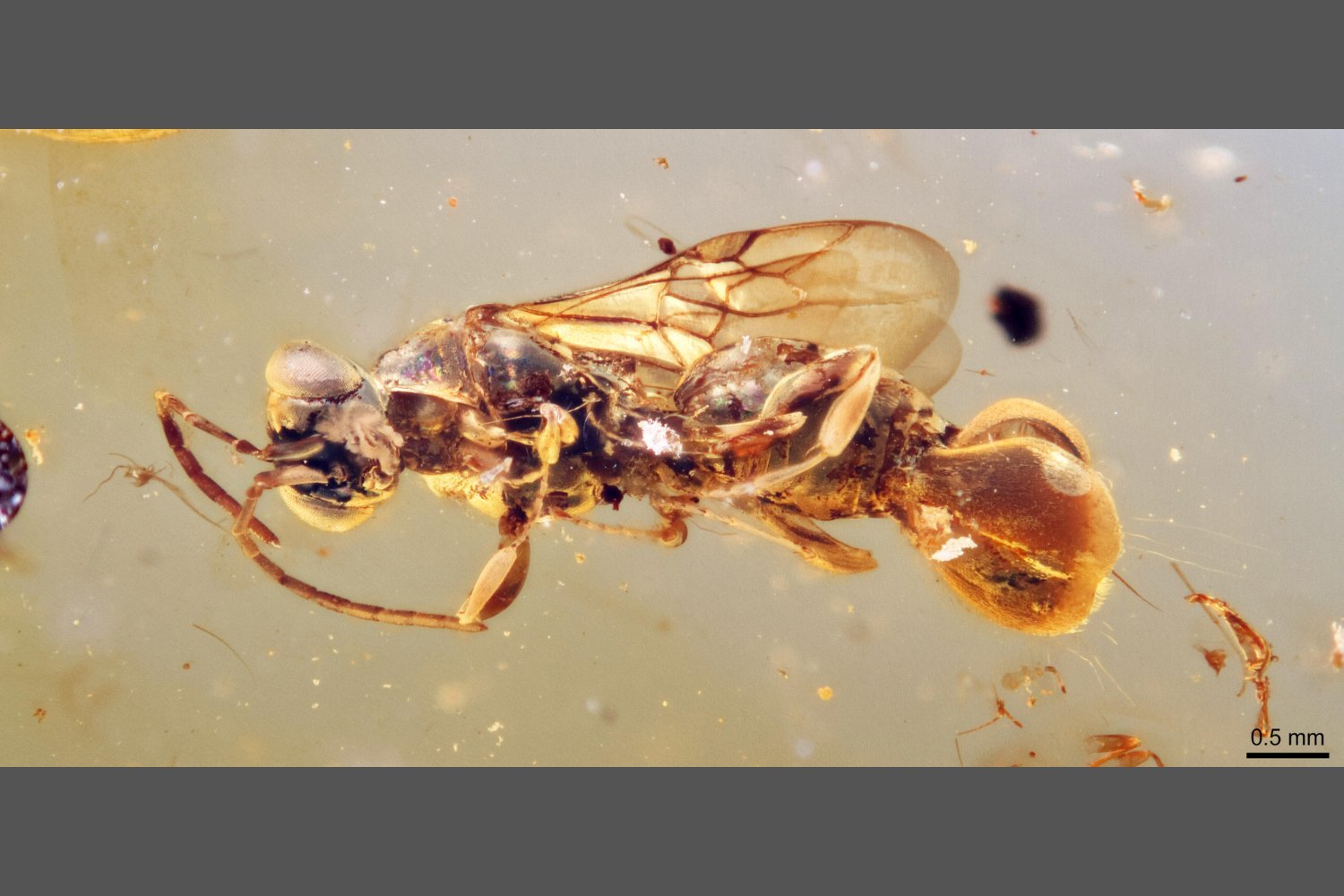The ancient world was even freakier than we knew. Research out this week details a parasitic wasp preserved in amber for near 100 million years that had a venus flytrap-light belly belly it might have used to ensnare Victimes.
Scientists in China and Denmark detailed their discovery in a study Published Late Wednsday in the Journal BMC Biology. They’ve named the wasp Sirenobethylus charybdis—A reference to the famous female sea monster of ancient Greek Legend. The bug and its unique appearance likely represents a previously unknown lineage of insects, the results say.
As is often the case in Greek mythology, there are varying origin stories For Charybdis. But the most widely knowledge version is in the odyssey, where she’s depicted as a sea monster capable of creating massive whirlpools that threaded to impede the Hero Odysseus Forced to Navigate Between Her and Scylla – SATHER FARSOME MONSTER).
S. Charybdis Might have been a lot smaller than its eponym, but it certain had its own Monsstrous-Looking Features.
The scientists examined 16 adult female speechs of the insect collected from Amber Originally found in the kachin region of Northern Myanmar. Based on Annalysis of its physical characteristics, Including x-rays to create a 3d reconstruction, the Researchers Determined That S. Charybdis Is a member of the parasitoid superfamily of inces called chrysidoidea, albeit in an entertained new genus.
Parasitoids are parasites, usually insects, that spend their early lives inside or on a host before reaching maturity and living freely as adults – the chestbuster from the Alien Movies, basically. Often, this freeloader lifestyle kuickly kills off the host, but S. Charybdis Might have been a koinobiont, a parasitoid that allows the host to feed and even grow while it’s being invaded early on (HOSTS usually do still do still do, though.
Thought S. Charybdis Shares some traits in common with today’s parasitoids, its lower abdomen appears to be something that scientists have never after being before in an ince The researchers directly evoke the venus flytrap (Dionaea Muscipula) In describing the insect’s unusual structure, composed of three horizontal flaps and hair-like bristles.
“The abdominal apparatus of Sirenobethylus Is unlike anything previously reported from any extant wasp or indeed any in connection to us, “They wrote. Different Specimens, It seems evident that the apparatus had some grasping function. “
While it’s Possible This apparatus was used by females to restrain males during mating, the resultarars believe it was more likely deployed to hold onTo the Happy The Happy Hosts that females Much like a venus flytrap, the wasp may have simply lied in wait with its belly open, its “leaves” shutting in response to the presence of a possible host.
There’s no knowledge insect living today with a similar strategy for catching hosts, the reserchers note. Accordingly, their discovery indicates that ancient parasitic insects like S. Charybdis Had all sorts of evolutionary adaptations that have since faded away.
“Our Findings Sugged that chrysidoidea displayed a wider range of parasitoid strategies in the mid-cretaceous than they do today,” They Wrote.
Personally, Given the Vast Array of Parasites Living Out There Today – Including wasps that can turn their cockroach hosts ento Walking zombies—I’M Glad that mother natural has forgotten some of her tricks.
